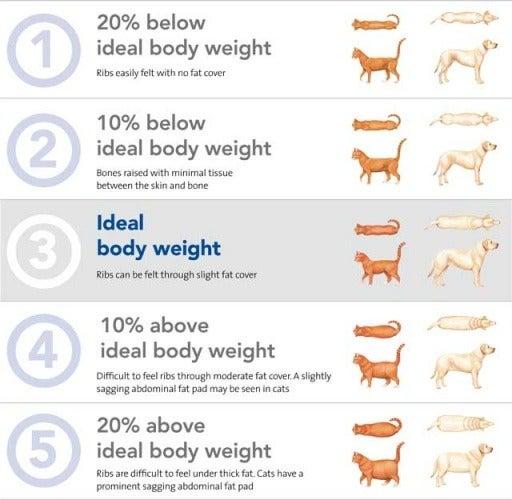Ensuring your dog maintains a healthy weight is one of the most loving and responsible actions you can take as a pet owner. Just like humans, dogs thrive when they are fit and active, enjoying a longer, happier life with fewer health issues. However, understanding how to manage your dog’s weight effectively can sometimes feel overwhelming, given the array of food options, exercise needs, and lifestyle factors to consider. In this guide, we will walk you through practical steps and gentle strategies to help your furry friend achieve and maintain their ideal weight. With a warm heart and a mindful approach, you can support your dog’s well-being, ensuring that their tail keeps wagging for years to come.
Understanding Your Dogs Nutritional Needs
To keep your furry friend healthy and energetic, it’s crucial to pay attention to their nutritional requirements. A balanced diet is key, encompassing the right mix of proteins, carbohydrates, fats, vitamins, and minerals. Here are some important considerations to ensure your dog’s diet is nutritionally sound:
- Protein: Essential for muscle development and repair. Opt for high-quality sources like chicken, beef, or fish.
- Carbohydrates: Provide energy. Choose whole grains such as brown rice or oats.
- Fats: Vital for a healthy coat and skin. Include healthy fats like omega-3 and omega-6 from fish oil or flaxseed.
- Vitamins and Minerals: Support overall health. Ensure your dog’s diet includes a variety of fruits and vegetables.
Understanding portion sizes and meal frequency is equally important. Consult with your veterinarian to tailor a diet plan based on your dog’s age, size, breed, and activity level. Regularly monitoring their weight and adjusting food intake accordingly can help prevent obesity and associated health issues, ensuring a long, happy life for your beloved pet.

Crafting a Balanced Diet Plan
Creating a nutritionally balanced diet for your dog is a cornerstone of effective weight management. A well-rounded diet not only supports a healthy weight but also boosts energy levels and enhances overall well-being. To begin, consider the following key components:
- Protein: Opt for high-quality sources such as chicken, fish, or beef. Protein helps build lean muscle mass and keeps your dog feeling satisfied.
- Carbohydrates: Choose complex carbs like sweet potatoes or brown rice, which provide energy and aid digestion.
- Fats: Healthy fats from sources like fish oil or flaxseed are crucial for a shiny coat and brain health.
- Fiber: Vegetables like carrots and green beans offer fiber that supports digestive health and keeps your dog feeling full.
Incorporating these elements into your dog’s meals, while keeping portion sizes appropriate, is essential. Avoid overfeeding by following recommended serving sizes based on your dog’s weight, age, and activity level. Regularly assess their body condition and adjust their diet as necessary, ensuring your furry friend maintains a healthy weight and a happy lifestyle.

Incorporating Exercise into Your Dogs Routine
Ensuring your furry friend stays fit and healthy requires a blend of fun and discipline. Regular exercise is a cornerstone of maintaining a healthy weight for your dog, and it can be easily woven into your daily routine. Here are some engaging ways to keep your dog active:
- Daily Walks: A brisk walk in the morning or evening is not only beneficial for your dog’s health but also a great way to bond. Aim for at least 30 minutes a day, adjusting the pace and duration based on your dog’s age and breed.
- Interactive Play: Incorporate play sessions with toys like balls or frisbees. These activities not only keep your dog physically fit but also mentally stimulated.
- Obstacle Courses: Set up a simple obstacle course in your backyard using household items. This encourages agility and coordination, offering a full-body workout.
- Swimming: If your dog enjoys water, swimming is an excellent low-impact exercise, perfect for dogs with joint issues or those who are overweight.
Remember, consistency is key. By introducing a variety of activities, you ensure your dog remains engaged and motivated. Always pay attention to your dog’s signals and adjust the intensity as needed to prevent overexertion.
Monitoring Progress and Adjusting as Needed
To ensure your dog’s weight management plan is on the right track, it’s crucial to regularly evaluate their progress and make necessary adjustments. Start by scheduling regular weigh-ins, either at home or during routine vet visits, to track changes in your dog’s weight. Observing your pet’s body condition score can also provide valuable insights into their overall health. Look for signs such as a defined waist, palpable ribs without excess fat, and a visible tuck-up from the side.
Additionally, pay attention to your dog’s energy levels, coat condition, and overall demeanor, as these can be indicators of their well-being. If you notice any concerning changes, consider modifying their diet or exercise routine. Here are some steps you can take:
- Adjust portion sizes: If your dog isn’t losing weight as expected, try slightly reducing their food intake.
- Enhance physical activity: Increase the duration or intensity of their daily walks or playtime.
- Consult a vet: If adjustments aren’t yielding results, seek professional advice for tailored recommendations.
Remember, patience and consistency are key to successfully managing your dog’s weight, ensuring a healthier and happier life for your furry friend.

